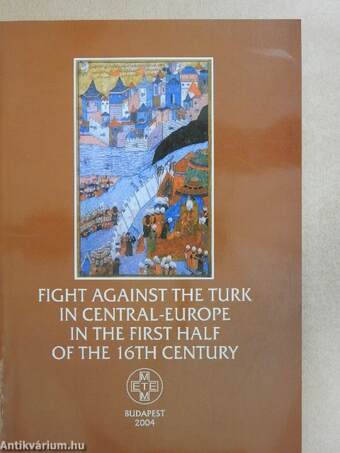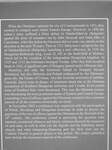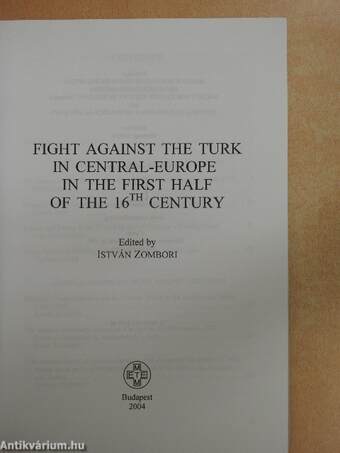1.067.053
kiadvánnyal nyújtjuk Magyarország legnagyobb antikvár könyv-kínálatát

VISSZA
A TETEJÉRE
JAVASLATOKÉszre-
vételek
Fight Against the Turk in Central-Europe in the First Half of the 16th Century
| Kiadó: | Magyar Egyháztörténeti Enciklopédia Munkaközösség-Historia Ecclesiastica Hungarica Alapítvány |
|---|---|
| Kiadás helye: | Budapest |
| Kiadás éve: | |
| Kötés típusa: | Ragasztott papírkötés |
| Oldalszám: | 227 oldal |
| Sorozatcím: | |
| Kötetszám: | |
| Nyelv: | Angol |
| Méret: | 24 cm x 17 cm |
| ISBN: | 963-8472-90-1 |
| Megjegyzés: | További szerzők a könyvben. |
naponta értesítjük a beérkező friss
kiadványokról
naponta értesítjük a beérkező friss
kiadványokról
Előszó
TovábbFülszöveg
When the Ottomans captured the city of Constantinople in 1453, they seemed to conquer soon whole Eastern Europe. However, in 1456 the sultan's army suffered a bitter defeat in Nándorfehérvár (Belgrade) against the army of crusaders led by John Hunyadi and Saint John of Capistrano. After this defeat the Ottomans did not make any attacks in this direction in the next 70 years. Then in 1521 Siileyman I occupied the city of Nándorfehérvár (Belgrade) launching a new offensive. In 1526 the Hungarian-Bohemian king, Louis II, fell in the battlefield at Mohács, which led to the cessation of the independent Hungarian kingdom. In 1529 and 1532 the Ottomans besieged Vienna. After they had occupied Buda in 1541, a significant part of Hungary passed under Ottoman rule.
However, not only the territories linked to Hungary became threatened, but also Bohemia and Poland endangered by the Ottomans' great ally, the Tartars of Crimea. Also the Austrian territories (Carinthia, Camiola, Styra) were in... Tovább
Fülszöveg
When the Ottomans captured the city of Constantinople in 1453, they seemed to conquer soon whole Eastern Europe. However, in 1456 the sultan's army suffered a bitter defeat in Nándorfehérvár (Belgrade) against the army of crusaders led by John Hunyadi and Saint John of Capistrano. After this defeat the Ottomans did not make any attacks in this direction in the next 70 years. Then in 1521 Siileyman I occupied the city of Nándorfehérvár (Belgrade) launching a new offensive. In 1526 the Hungarian-Bohemian king, Louis II, fell in the battlefield at Mohács, which led to the cessation of the independent Hungarian kingdom. In 1529 and 1532 the Ottomans besieged Vienna. After they had occupied Buda in 1541, a significant part of Hungary passed under Ottoman rule.
However, not only the territories linked to Hungary became threatened, but also Bohemia and Poland endangered by the Ottomans' great ally, the Tartars of Crimea. Also the Austrian territories (Carinthia, Camiola, Styra) were in danger of imminent attack due to the Ottoman occupation of Southern Hungarian territories and Croatia. Even certain areas of Northern Italy were threatened. This way the Ottoman menace was threatening the most prominent states of Eastern and Central Europe. Launching a war of offence against the Ottomans seemed to be a common interest of all the countries territorially involved.
In November 2003 a conference was organized with the participation of Polish, Slovakian and Hungarian historians in order to discuss the questions of the war of offence against the Ottomans in the first half of the 16"^ century. The conference aimed at answering the question what interests, occasional alliances and family relations directed the monarchs of each state, as well as what role the Jagiello and the Habsburg family played, and what integrating-financing part the Holy Seat and the Catholic Church in general played in this period. The studies published here include the increased material of the conference. Vissza
Témakörök
- Idegennyelv > Idegennyelvű könyvek > Angol > Vallás > Kereszténység
- Idegennyelv > Idegennyelvű könyvek > Angol > Történelem > Európa története > Magyarország története
- Idegennyelv > Idegennyelvű könyvek > Angol > Történelem > Európa története > Egyéb
- Idegennyelv > Idegennyelvű könyvek > Angol > Történelem > Egyéb
- Vallás > Kereszténység > Története
- Történelem > Idegennyelvű > Angol
- Történelem > Magyarország története és személyiségei > Török háborúk és az ország háromrészre szakadása > Hadtörténet
- Történelem > Politika > Külpolitika > Egyéb
- Történelem > Magyarország története és személyiségei > Átfogó művek, tanulmányok
- Történelem > Kontinensek szerint > Ázsia, ázsiai országok története > Közel-Kelet
- Történelem > Középkor > Felfedezések kora (15-16. sz.)
- Történelem > Hadtörténet > Hadügy, hadviselés
- Történelem > Tanulmányok
- Vallás
- Vallás > Kereszténység
- Vallás > Kereszténység > Tanulmányok
- Történelem > Kontinensek szerint > Európa, európai országok története > Közép-Európa > Egyéb











